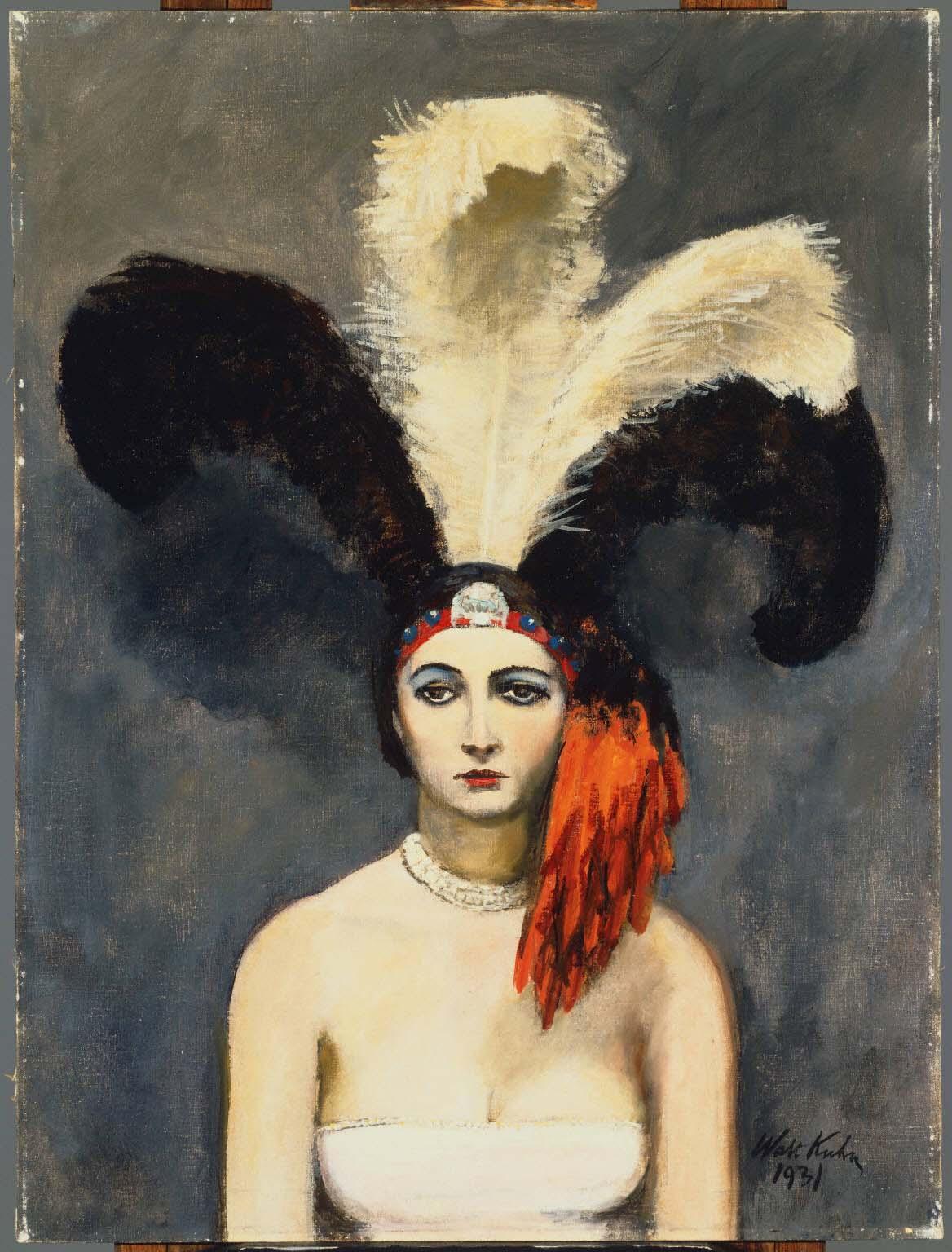Plumes
Walt Kuhn ( 1931 )

Remembered as an early promoter of modern art in America, Walt Kuhn was broadly talented; he was not only a renowned painter, but also a cartoonist, sculptor, printmaker, writer, teacher, and producer of vaudeville shows. Born October 27, 1877, Kuhn grew up in Brooklyn, New York where he received his education in private schools until he was sixteen. In 1901, Kuhn traveled to Europe to receive formal art training at the Académie Colarossi in Paris and later at the Munich Academy. Kuhn returned to New York in 1903 and established a studio in Manhattan. A fiercely independent and self-critical painter, Kuhn helped arrange the 1910 Exhibition of Independent Artists and was a founding member and officer of the Association of American Painters and Sculptors, the organization responsible for mounting the Armory Show of 1913.
Plumes is a quintessential painting by Kuhn; a performer, shown in frontal view and wearing a slightly disillusioned expression, is placed against a simple background and depicted in bright, dissonant colors. The theme of a “routine underpaid showgirl wearily crowned by a fantasy of theatrical finery” frequently occurred in Kuhn’s mature oeuvre and was met with a great deal of success. Painted directly from the model, Mabel Benson, in December 1931, Plumes was one of several canvases the artist created after a European trip that included a visit to El Prado in Madrid. The work reveals the influence of Spanish artists such as Goya and Velázquez and echo certain works by Manet that have a distinctly Spanish quality.
Duncan Phillips was “especially impressed by Plumes… The girl under the Plumes, he wrote, “is thoroughly disillusioned and tired of it all. She seems to sag under her magnificent headdress and wonder perhaps why she ever left home. That headdress nonetheless is a magnificent passage of painting. The feathers are the very essence of feathers and, as texture, they are the apotheosis of pigment.”